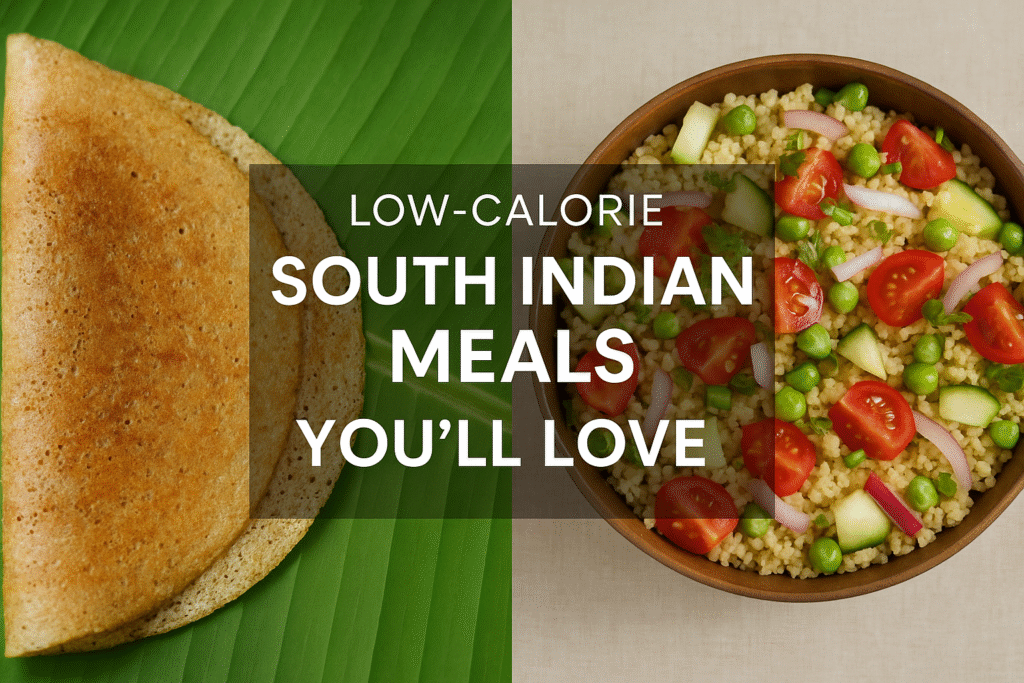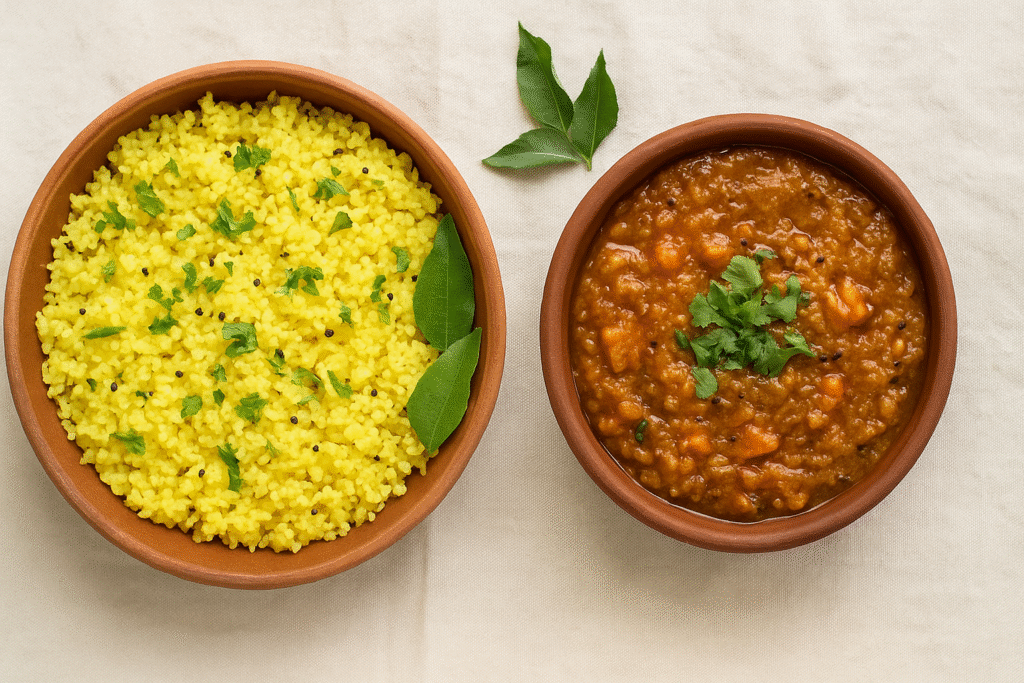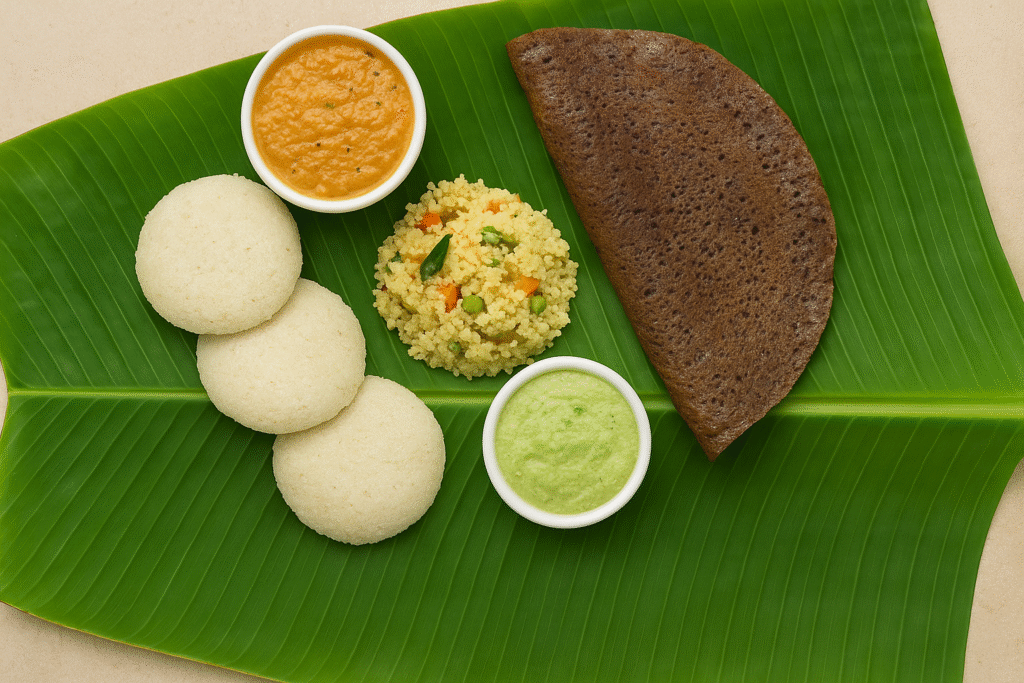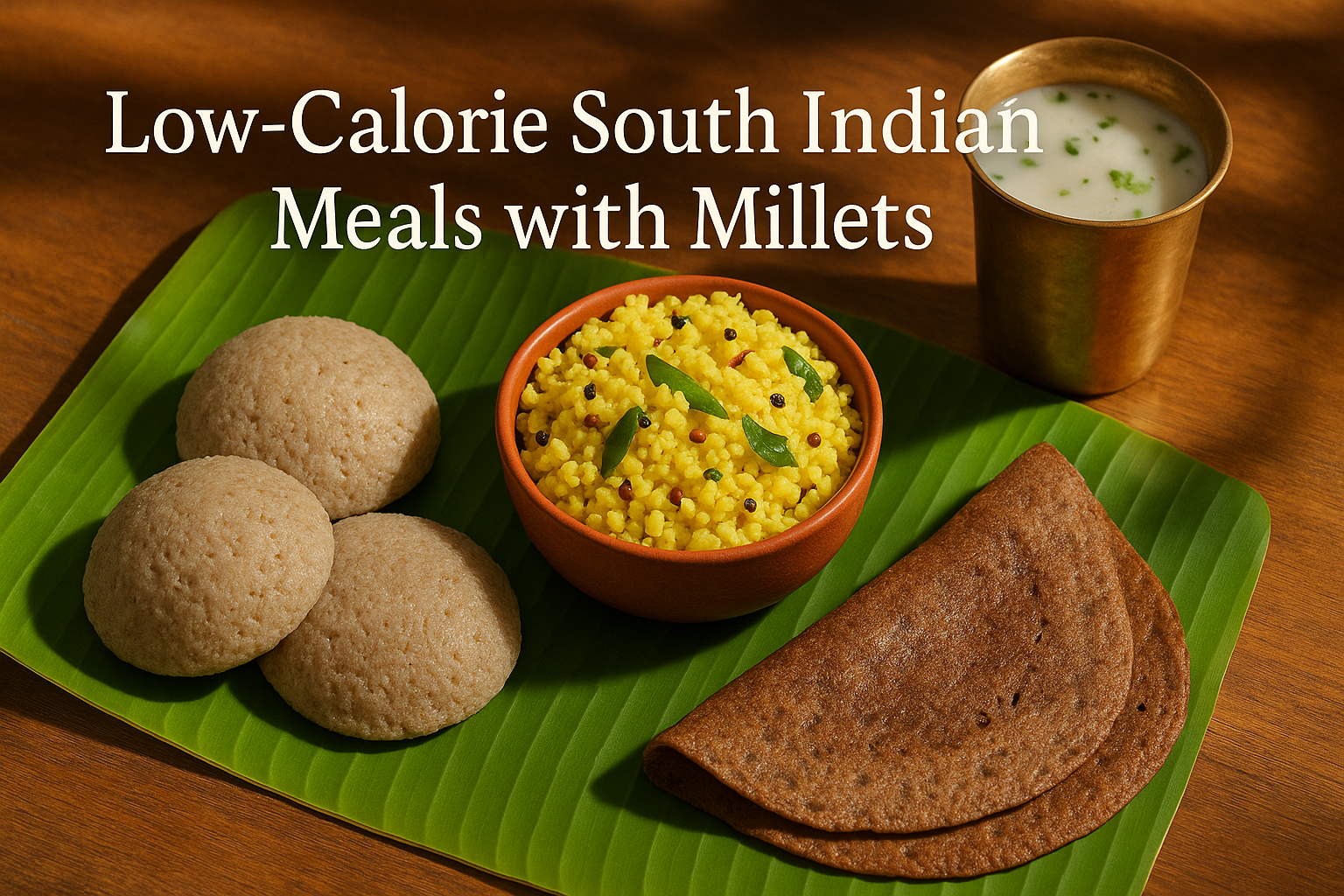In homes across South India, millets are slowly stealing the show. These ancient grains that our grandparents were so familiar with are enjoying renewed popularity, and more and more people are replacing rice and refined grains for these particular nutrient-dense whole grains. They’re not only low-calorie; they’re gut-friendly, fiber-rich and nutrient-dense, perfect for the modern Indian plate.
Millets add fiber, balance sugar levels, and bring that nice full feeling without extra calories. When turned into dosas, pongal, or upma, they fit naturally into familiar South Indian routines. Here, we’ll look at simple, low-calorie South Indian meals made with millets that don’t need fancy ingredients or strict diets – just common sense, local flavor, and a small twist.
Let’s talk about how to make your meals tasty, filling, and truly low in calories using these tiny nutritional powerhouses.
Why millets fit perfectly in low-calorie South Indian diets
South Indian meals often have a base of rice or idli batter, both tasty but calorie-dense. Swap them with millets like foxtail, kodo, barnyard, or little millet, and you’ll instantly feel lighter yet full.
Millets digest slowly, meaning they don’t spike sugar. They have more fiber, so you feel satisfied faster — and that naturally cuts calorie intake. A small serving of foxtail millet upma gives you steady energy without the afternoon slump.
Calorie comparison (per 100g cooked grain):
| Food | Calories | Fiber (g) | Protein (g) | Glycemic Index |
| White Rice | 130 | 0.4 | 2.4 | High |
| Foxtail Millet | 119 | 6.7 | 12.3 | Low |
| Ragi (Finger Millet) | 120 | 3.6 | 7.3 | Low |
| Kodo Millet | 122 | 9 | 8.3 | Low |
| Barnyard Millet | 110 | 10 | 11 | Very Low |
Even nutritionists across India are suggesting millets as daily staples because they help maintain weight without feeling like you’re dieting.
Understanding popular millets used in South Indian cooking
Each millet brings its own vibe to the table.
- Foxtail millet – light, slightly nutty, great for idli, dosa, upma
- Ragi (finger millet) – dark, earthy, perfect for dosa and porridge
- Kodo millet – soft texture, fits lemon rice or pongal
- Barnyard millet – super light and fast-cooking, ideal for curd rice or khichdi
- Little millet – mild, perfect for pongal, upma, or porridge
A small twist like switching to millets in these familiar dishes keeps your South Indian flavors intact while cutting around 20–30% of total calories per meal.

Low-calorie millet breakfast ideas for busy South Indian mornings
Breakfast is sacred in South India, right? Light, quick, and tasty — that’s what we want. Here are few recipes that keep calories low and taste high.
1. Foxtail Millet Idli
Soft and fluffy, just like rice idli, but way lighter.
Ingredients:
- 1 cup foxtail millet
- ¼ cup urad dal
- Salt
Method:
Soak millet and dal for 6 hours. Grind to smooth batter, ferment overnight. Steam in idli plates for 10 mins.
Calories: ~60 per idli
Tip: Add grated carrot or spinach for fiber punch.
2. Ragi Dosa with Coconut Chutney
This one hits the nostalgia note with a nutty kick.
Ingredients:
- 1 cup ragi flour
- ¼ cup rice flour
- Buttermilk, salt, cumin seeds
Mix to thin batter, rest for 30 mins, cook on tawa.
Calories: 90 per dosa
Tip: Roast on low flame to get that crispy edge without oil.
3. Little Millet Upma
A morning comfort dish that doesn’t feel heavy.
Ingredients:
- 1 cup little millet
- Onion, carrot, peas, curry leaves
- ½ tsp mustard + 1 tsp oil
Calories: ~180 per serving
Note: Replace oil with ghee only on weekends (wink).
4. Barnyard Millet Pongal
This version tastes just as hearty, with 40% fewer calories than rice pongal.
Ingredients:
- ½ cup barnyard millet + ¼ cup moong dal
- Black pepper, cumin, ginger, curry leaves
Calories: 210 per bowl
Add-on: Pair with coconut chutney for complete comfort.
These meals hit that balance — low calorie, light on oil, high on flavor.
Light lunch ideas using millets that still feel indulgent
Lunch is where calorie traps hide — oil-heavy curries, rice overloads. Here are few tweaks that make your lunch filling yet under 350 calories.
1. Millet Lemon Rice
Calories: 230 per serving
How to make:
Cook kodo or foxtail millet, toss with lemon juice, mustard seeds, green chili, turmeric, and curry leaves.
Pro tip: Add roasted peanuts in small amount — gives crunch without piling calories.
2. Vegetable Millet Pulao
Calories: 310 per bowl
Saute onion, tomato, and vegetables in 1 tsp oil, add soaked barnyard millet, cook till soft.
Add-on: Great for Indian millet diet for weight loss.
3. Curd Millet Bowl
Perfect for Indian summers.
Calories: 270 per bowl
Mix cooked little millet with curd, grated cucumber, and coriander. Temper with mustard and curry leaves.
Colloquial tip: This one’s comfort in a bowl — you’ll clean it to the last grain.
4. Millet Sambar Rice Bowl
Use foxtail millet instead of rice.
Calories: 290 per serving
Cook millet, mix with sambar loaded with veggies like drumstick, pumpkin, and beans.
5. Ragi Roti with Vegetable Curry
Calories: 250 per roti + curry combo
Make ragi dough with warm water, salt, onion, and coriander. Serve hot with any veg curry.
Dinner ideas: light millet meals that keep you full yet easy to digest

Dinner should feel like a gentle meal, not a test for your gut. Millets are perfect here since they digest slow but light.
1. Barnyard Millet Khichdi
Calories: 220 per bowl
Cook barnyard millet with moong dal, cumin, and ginger. It’s soothing and works for both kids and adults.
2. Ragi Dosa with Tomato Soup
Calories: 190 per combo
A crisp ragi dosa with warm tomato soup is just perfect after a long day. Keeps you full but not heavy.
3. Millet Vegetable Stew
Calories: 200 per bowl
Simmer chopped vegetables with thin coconut milk, pepper, and cooked little millet.
Taste-wise? A light Kerala-style stew without the post-meal nap.
4. Foxtail Millet Pongal
Calories: 230 per bowl
Simple, mild, and perfect before bed. Add a dash of ghee if you like the aroma of South Indian temple food.
Tips to make South Indian millet meals truly low-calorie
To stay under calorie control while still eating traditional, use few easy tricks that work every time.
- Reduce oil: 1 tsp is usually enough for 2 servings.
- Add veggies: Volume without calories.
- Avoid fried papad and vadas: Save those for Sundays.
- Control portion size: Millet expands more when cooked.
- Go light on chutneys: Coconut adds calories quick.
A good thumb rule — one small bowl (¾ cup) of cooked millet per meal keeps you around 250–300 calories.
Expert cooking tips for millets that retain flavor and nutrients
Cooking millets right changes everything.
- Soak millets for 2–4 hours before cooking to soften fiber.
- Use a 1:2.5 ratio (millet to water).
- Let it rest for 5 mins after cooking.
- If it feels too dry, add steamed veggies or buttermilk.
- Toast dry grains lightly before soaking — gives a nutty aroma.
Try experimenting with small batches. Once you get the hang, it’ll slide right into your kitchen routine.
Smart calorie swaps for classic South Indian dishes
| Traditional Dish | Millet Version | Calorie Savings |
| Rice Idli | Foxtail Millet Idli | ~25% fewer calories |
| White Rice Pongal | Barnyard Millet Pongal | ~30% fewer calories |
| Lemon Rice | Kodo Millet Lemon Rice | ~28% fewer calories |
| Curd Rice | Little Millet Curd Rice | ~35% fewer calories |
| Dosa (Rice Batter) | Ragi Dosa | ~20% fewer calories |
Even those small swaps add up if you’re having South Indian food twice a day.
Health perks of adding millets in South Indian meals
Besides calorie count, millets do a bunch of other good stuff.
- Keeps sugar steady: Ideal for diabetics.
- Boosts gut health: All that fiber feeds good bacteria.
- Improves satiety: You eat less naturally.
- Adds minerals: Iron, magnesium, calcium — all in one grain.
- Gluten-free: Perfect for those avoiding wheat.
These aren’t just healthy grains; they’re part of India’s forgotten food culture making a comeback for a reason.
Millet meal timing tips for better results
- Eat heavier millet dishes like pongal or dosa in the morning.
- Stick to light millet porridge or curd millet for dinner.
- Avoid pairing millets with too many heavy curries.
- Drink buttermilk instead of soft drinks or sweet lassi.
These small tweaks turn your diet sustainable — you don’t feel like you’re on one.
How to make millets taste authentic in South Indian dishes

Some people skip millets saying they taste different — truth is, it’s just about spices and textures.
- Roast spices fresh each time.
- Add a dash of coconut and curry leaves for aroma.
- Mix millets with a little rice (80:20 ratio) at first.
- Once you adjust, go full millet.
After a week, your taste buds adapt, and you won’t crave white rice anymore.
Also read: Why Kodo Millet Should Be on Every Indian Plate for Better Health
Conclusion: A lighter, tastier way to enjoy South Indian food
Millets bring back the tradition of South Indian cooking with a healthy spin. They’re low-calorie, high-fiber and keep you feeling full longer without sacrificing the pleasure of a good meal. It might be a fluffy millet idli, lemon rice or comforting pongal, each bite feels nostalgic and deeply nourishing.
You don’t even need fancy stuff at home to cook millets keep the same spices, the same hands and make a small shift in your grain choice. And in a couple of weeks, you start to feel the change your body is lighter, digestion is better, and your energy is stable all day. And on one of those bad weekdays, you will remember you, craving for South Indian comfort food, and jumping for that jar of millet. The same wisdom of the old serving the new India – one bowl at a time.

